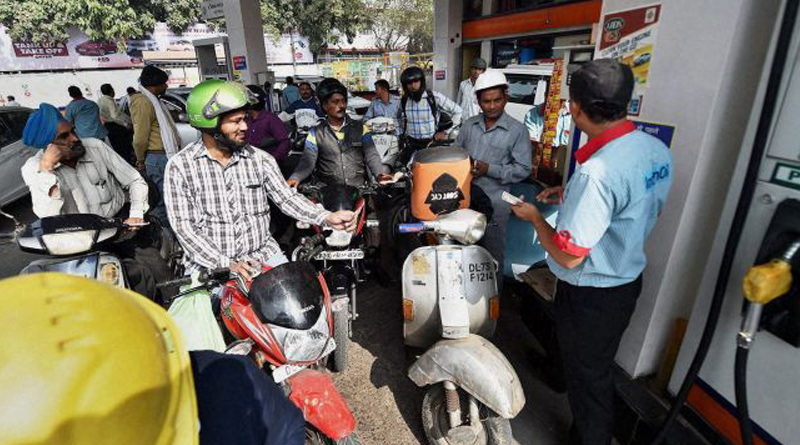India’s middle class, supported by many opposition parties, wants a cut in fuel taxes to stem the sharp rise in petrol and diesel prices. This would be wrong for several reasons.
The same political and middle classes claim they want to check the threat of climate change. But cutting fuel taxes will encourage the consumption of petroleum products, increasing carbon emissions that warm the globe. Instead, the logical way forward is a high tax on all forms of carbon, making this revenue-neutral by cutting taxes on other items. That will discourage carbon emissions without affecting tax revenue, which is needed for infrastructure and essential social spending. This will be a wise climate precaution even if the global warming threat turns out to be exaggerated.
Surprise surprise, India is doing exactly this. The Goods and Services Tax (GST) rate on most items ranges from zero to 18%, with a few items bearing 28%. But the effective tax rate on petrol is close to 100% in states like Maharashtra, Delhi and Karnataka. So, India is levying an exceptionally high tax on the carbon in oil products, and compensating with lower taxes on other items. Note — these other items include coal, which really should be covered by a carbon tax too. The high tax on oil products can be called a partial but substantial carbon tax, that reduces emissions significantly.
Three other major reasons justify exceptionally high taxes on oil products. First, they are polluting, and have helped convert many cities into deathtraps. Second, they are non-renewable, and a high tax helps conservation. Third, oil is by far the biggest import item and threatens to rise exponentially as India develops and urbanises.
This makes India vulnerable to sudden rises in oil price. These can tip the balance of payments from okay to worrying, inducing a massive outflow of foreign portfolio investment (this is happening right now). Today, this is by far the most important reason to keep taxes high. Foreign portfolio investors are pulling billions of dollars from all emerging markets including India, threatening the sort of financial meltdown we saw in 2013. The Modi government has done well to declare that it will hold firm on oil taxation, and avoid populist giveaways that could threaten both fiscal and currency stability.
Petroleum products have been kept out of the GST. Instead the central government levies a flat excise duty tax plus cess of Rs 19.48/litre on petrol and Rs 15.30/litre on diesel. States then levy a value added tax (VAT) which varies from state to state. For petrol, VAT is highest in Maharashtra (39%) with Karnataka levying 30.28% and Delhi 27%.
In Delhi, the retail price has crossed Rs 80/litre, of which around Rs 36/litre consists of central and state taxes. The states get most of this — all of VAT plus 42% of the Centre’s excise duty (under the Finance Commission’s latest award).
When world oil prices rise, the flat central excise duty does not change. But the state VAT rises with the import price. SBI chief economist Soumya Kanti Ghosh suggests the states will gain a windfall of Rs 22,000 crore from the recent sharp rise in oil prices, providing space for them to cut VAT. Poll-bound Andhra Pradesh and Rajasthan have already done so.
In fact the supposed windfall gain is illusory at a national level. The notion that oil-importing countries gain hugely from a rise in oil prices is surely laughable. Yes, higher prices mean more tax revenue, but much more expenditure too.
Higher prices increase the travel bills of central and state governments, and dearness allowance too in due course. They increase subsidies on controlled items like kerosene and cooking gas. They increase the cost of fertilisers, and hence of fertiliser subsidies. They increase the cost of farming, and hence lead to higher crop support prices and higher food subsidies. The railways and state transport corporations use a lot of diesel and will pay more. State-owned coal-based power stations use a lot of fuel oil, and will pay more. The list goes on and on.
The combined fiscal deficits of the Centre and states have remained very high by world standards at 6.7 to 6.9% of GDP in Modi’s four years. The decline in the Centre’s fiscal deficit has largely been offset by rising state deficits. Prachi Mishra of Goldman Sachs has shown that governments tend to increase fiscal deficits in pre-election years, an additional source of vulnerability. At a time when foreign investors are pulling billions out of emerging markets, fears of fiscal slippage will only increase the outflow. This is no time to cut any taxes whatsoever.


